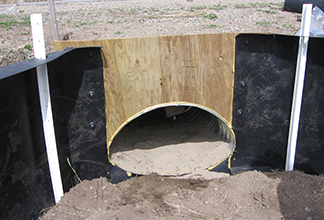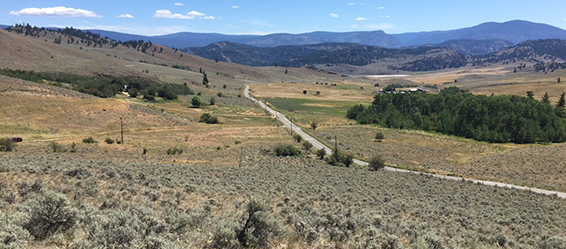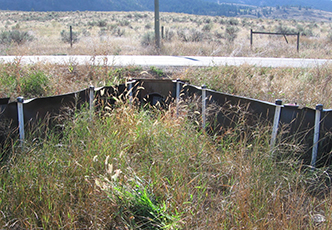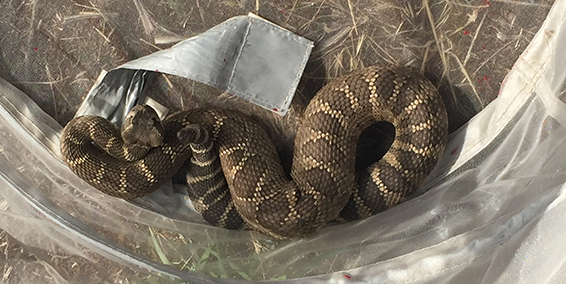Western Rattlesnake
In 2001, Thompson Rivers University (TRU) researchers and provincial biologists teamed up to identify Western Rattlesnake habitat in and around the City of Kamloops. Between 2001 and 2007, 11 new snake dens were found within 2 km of Kamloops.
Urban and Rural Development
Biologists and the City of Kamloops began working together in 2006 to address city growth in snake habitat. As a result, 1400 m of snake fencing was installed along a newer development. The City now requires developers to install snake-proof fencing for new subdivisions in rattlesnake habitat.
Biologists, the City and WildSafeBC continue to do public education and relocate snakes that occasionally show up in backyards. Kamloops Bylaw officers take annual snake training at the BC Wildlife Park.  These efforts increase public awareness of these shy, non-aggressive snakes. They also stress the importance of maintaining snake-proof fences.
These efforts increase public awareness of these shy, non-aggressive snakes. They also stress the importance of maintaining snake-proof fences.
The province is optimistic that the non-aggressive Western Rattlesnake can persist within Kamloops city limits.
Road mortality mitigation
Research by TRU and supported by the BC Ministry of Forests, Lands and Natural Resource Operations and Rural Development shows that in the White Lake Basin of the South Okanagan, vehicle traffic kills 400-500 snakes per year. For the already threatened rattlesnake, this could mean local extinction in under 100 years.

Joint mitigation efforts of FLNRORD, TRU and the Ministry of Transportation and Infrastructure in the White Lake area have focused on installing culverts beneath the road to provide an alternate way for the snakes to cross. This includes installing specialized fencing to direct snakes (and other creatures, including turtles, salamanders and small mammals) to use the culverts.  Culvert use and rattlesnake populations continue to be monitored to gauge the effectiveness of this mitigation technique. Nighttime road temperatures are also being measured to test the hypothesis that snakes stop on roads for the warmth they provide.
Culvert use and rattlesnake populations continue to be monitored to gauge the effectiveness of this mitigation technique. Nighttime road temperatures are also being measured to test the hypothesis that snakes stop on roads for the warmth they provide.
Read more about Western Rattlesnakes in the White Lake area in the local news.

